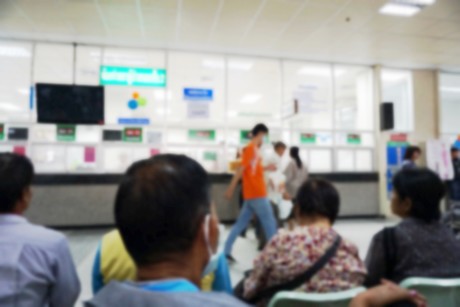More Australians going private in hospitals — but what's the effect on waiting times?

While public hospital admissions are growing steadily and in pace with those to private hospitals, a new report from the Australian Institute of Health and Welfare (AIHW) shows that more patients are using private health insurance in hospitals.
The report ‘Admitted patient care 2015–16: Australian hospital statistics’ shows that there were about 10.6 million admissions to Australia’s hospitals in 2015–16, with about 59% of these occurring in public hospitals. Growth in admissions for public and private hospitals combined over the last five years was around 3.5% on average each year.
“Growth in private hospital admissions was slightly ahead of public hospital admissions, up by 3.7% and 3.3% on average yearly, respectively,” said AIHW spokesperson George Bodilsen.
However, the report shows a larger gap between growth in public patients and growth in patients who used private health insurance to fund all or part of their admission.
“In the five years to 2015–16, admissions for public patients rose by an average of 2.9% each year, compared with 5.5% for patients who used private health insurance to fund their admission,” Bodilsen said.
“In public hospitals in 2015–16, 83% of admissions — or 5.2 million — were for public patients, with around 14% of patients — or 872,000 — using their private health insurance to fund all or part of their admission.”
The report also shows how elective surgery waiting times to public hospitals vary by source of funding. Bodilsen noted, “Public patients had a median waiting time of 42 days for elective surgery in a public hospital, while it was 20 days for patients who used private health insurance to fund all or part of their admission.”
The Australian Healthcare and Hospitals Association (AHHA) has defended the figures, with chief executive Alison Verhoeven stating that the difference in waiting times “is not a reason to finger-point or jump to unsupported conclusions”.
“While the AIHW has highlighted the difference in median waiting times for a group of patients that represents 6.9% of all patients admitted to public hospitals for elective surgery, the key issue is that public hospitals need to be appropriately funded to treat all patients on their waiting lists,” Verhoeven said.
“Hospitals across Australia have different arrangements in place with surgeons, other private providers and in the way they manage elective surgery waiting lists and use of private health insurance. To present only a national figure is a blunt approach which tells an incomplete story.
“For data of this type to usefully inform the debate, more detailed information needs to be provided that isolates where and how private health insurance is being used by patients in different hospitals across the country, and the circumstances in which it is used.
“There are valid reasons for using private health insurance in public hospitals, including the lack of availability of private hospital care in some regional areas, visiting officer practice rights in public hospitals and patient choice of clinician, all of which are longstanding fundamental features of our health system.
“Better data will usefully inform future National Health Reform Agreement discussions between the states and territories and the Commonwealth on the impact of private patients in public hospitals.
“The outcome of such discussions must ensure that public hospital resources are sufficient to deliver services to public patients, including elective surgery, in a timely manner.”
National concussion clinical guidelines now available
The first Australia- and New Zealand-specific guidelines for all forms of concussion — from...
Doctors criticise "risky prescribing agenda"
The AMA and RACGP have expressed disappointment in the Pharmacy Board of Australia's...
Free, nurse-led support line for primary liver cancer now open
October is Liver Cancer Awareness Month, and Liver Foundation has launched a free, nurse-led...


![[New Zealand] Transform from Security Awareness to a Security Culture: A Vital Shift for SMB Healthcare — Webinar](https://d1v1e13ebw3o15.cloudfront.net/data/89856/wfmedia_thumb/..jpg)
![[Australia] Transform from Security Awareness to a Security Culture: A Vital Shift for SMB Healthcare — Webinar](https://d1v1e13ebw3o15.cloudfront.net/data/89855/wfmedia_thumb/..jpg)




